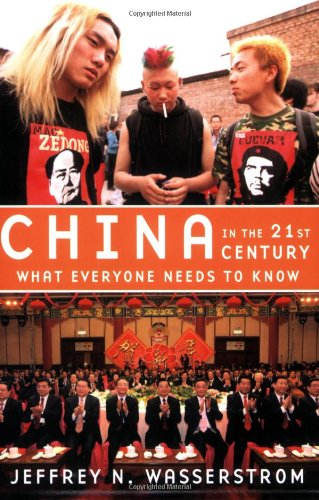originally posted elsewhere: December 27, 2011
tl;dr: Timely, easy-to-read primer on China...
As one of the blurb writers on the back cover basically states, if you are looking for something to read on your first flight to China to learn about the country, then Jeffrey Wasserstrom's China in the 21st Century: What Everyone Needs to Know is your book. Even if you aren't visiting China, or have been there before and have learned a bit about the country, then China in the 21st Century is a good, relatively up-to-date (as of 2010) overview of the important aspects of the country's history as well as current issues.
Wasserstrom tackles a seemingly impossible task, to summarize the key historical events of a mythical 5,000 year-old society as well as recent news events and current issues in the span of a mere 135 pages. All in all he does a more than adequate job. The book is broken into six chronological chapters and follows a "FAQ" (Frequently Asked Questions) format. This, plus the fact that he uses language and vocabulary aimed at a mass (rather than an academic) audience, make the book highly readable. I only have two quibbles: the book could have benefited from another round of proofreading and fact checking, as there are a few mistakes of facts which are obvious upon reading; and I would have preferred to see a bit more explanation of how China's economy has boomed over the past 20 years and how it has impacted the people and culture. There are a few academically-inclined topics, such as debates about certain writers and works of literature, that could have been shortened or dropped to free up more space for economic issues.

China in the 21st Century will, at a minimum, provide you with a framework and timeline of important events, as well as educate you about the major aspects of those events, such that you can put subsequent information into context. If you want to learn more about China, you can then choose other books and articles that explore topics in more depth. One of the best attributes of China in the 21st Century is that Wasserstrom has provided a detailed "Further Reading" section, which not only points to other reading material but provides the author's views on each work, so that you get a flavor of what to expect.
So aside from a few flaws, China in the 21st Century is a very good primer on China. Perhaps the publisher will be encouraged to produce similar volumes for India, Russia, Brazil and other emerging countries.